Immerse yourself in authentic Japanese cultural experiences by wearing traditional clothing in Japan, from elegant kimonos and casual yukatas to historical samurai and ceremonial attire. Beyond sightseeing, you can participate in hands-on activities such as tea ceremonies, calligraphy, and traditional craft workshops while dressed in these iconic garments. Traditional clothing in Japan reflects centuries of history, seasonal symbolism, and regional customs, offering a unique way to connect with the country’s rich heritage. With Best Experience Japan, you can enjoy a curated experience with immersive cultural activities, ensuring a memorable and authentic journey through Japan.
Why Traditional Clothing Matters in Japan
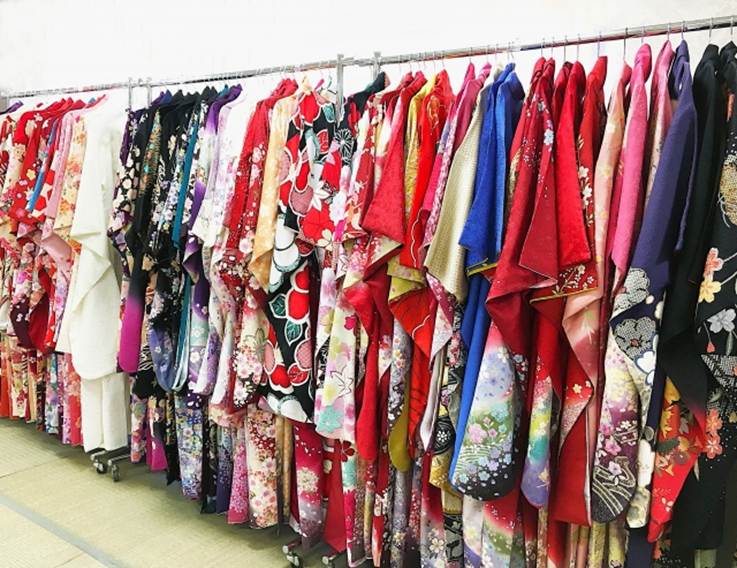
From Heian period court dress, Edo era commoner garments, to modern ceremonial uses, traditional clothing in Japan is a revered craft, a symbol of cultural identity, and a means of expressing pride and heritage. The kimono, yukata, hakama, etc., connect people to their roots and reflect social identity, status, and seasonality. The garments remain significant through the modern trend of wearing traditional clothing for festivals, tourism, and photography.
Key Traditional Clothing to Try
Kimono

Kimono are elegant, hand-crafted robes that showcase Japan’s artistry, often featuring hand-dyed, embroidered, or painted designs. Worn so the hem falls to the ankle, the left side is always wrapped over the right and secured with a wide sash called an obi. Different kimono styles suit various occasions, from formal ceremonies to casual outings, with colors, patterns, and family crests indicating their formality.
Trying on a kimono is a memorable way to experience Japanese culture. Beyond capturing Instagram-worthy photos, it offers a deeper connection to history and tradition. Strolling through Kyoto’s historic streets or Tokyo’s charming alleys in a kimono allows you to immerse yourself in Japan’s timeless heritage and feel what it’s like to step into a living cultural tradition.
Yukata
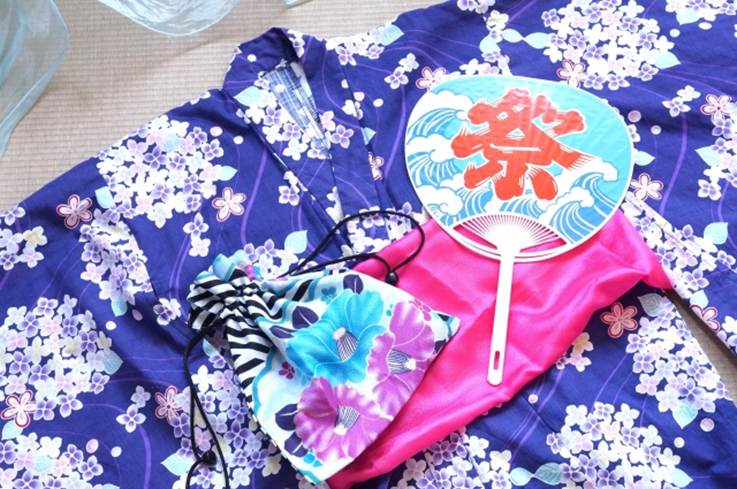
The yukata, meaning “bathrobe,” is a casual, lightweight version of the kimono, perfect for summer. Traditionally worn at festivals, ryokan, or onsen, it keeps you cool in the Japanese heat while adding elegance to your experience. Yukata come in vibrant colors and patterns, accessorized with obis, geta (clogs), and hair ornaments. Wearing one is a fun, stylish way to enjoy summer activities, explore city streets, or relax at hot springs.
Hakama & Haori
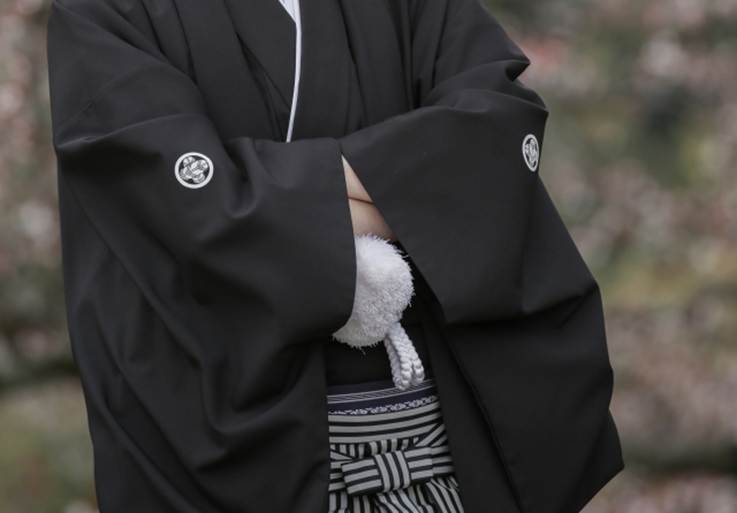
The Haori is a traditional jacket worn over a kimono, while the Hakama are wide, pleated pants or skirt-like garments worn below the waist. Often paired together for formal occasions, festivals, or martial arts, this ensemble exudes dignity and historical significance. Originally functional—the Hakama allowed freedom of movement for martial arts, and the Haori provided warmth—it remains a meaningful way to experience traditional Japanese attire.
Other Niche Garments
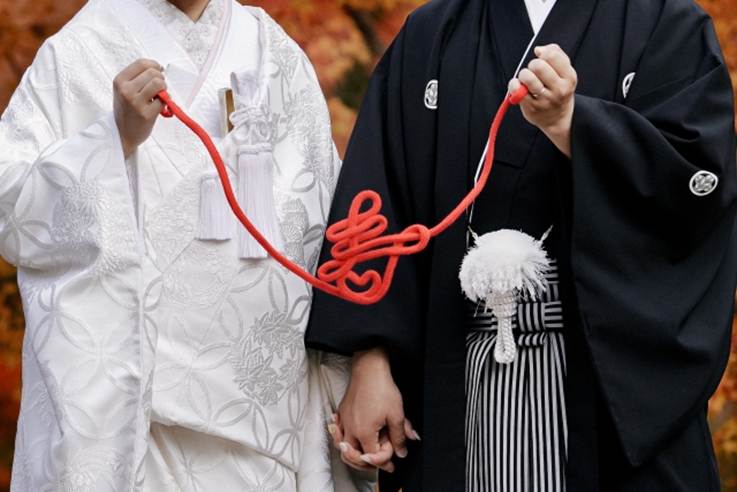
Some rare but iconic garments include the Shiromuku, a pure-white wedding kimono symbolizing purity and new beginnings, and the Jūnihitoe, a multi-layered formal kimono historically worn by noblewomen during the Heian period. Both offer a unique, once-in-a-lifetime glimpse into Japan’s ceremonial traditions, craftsmanship, and elegant history.
Tips for Tourists:
- To choose Japanese traditional clothing, pick a style appropriate for the season and formality, like a lined awase kimono for cooler months or a single-layered hitoe for warmer months.
- When wearing, ensure a proper fit with the left-over-right overlap (except for funerals) and layer the correct undergarments.
- Pay attention to the season when choosing colors and styles, and look out for secure, comfortable fitting.
Hands-On Traditional Activities
Wearing traditional Japanese clothing is only part of the experience—pairing it with hands-on cultural activities brings your journey to life. From meditative arts to interactive workshops, these experiences deepen your connection to Japan’s heritage.
Tea Ceremony (Chado / 茶道)
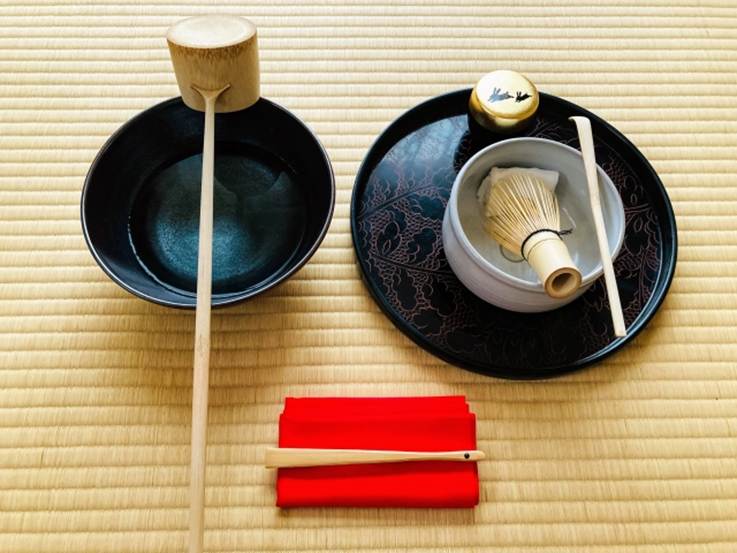
Dress in a kimono and participate in Chado, the traditional Japanese tea ceremony. Rooted in Zen Buddhism, it is both a spiritual and aesthetic practice, guiding you through graceful movements to prepare and serve matcha (powdered green tea). The ceremony offers a meditative, once-in-a-lifetime experience, allowing you to savor the flavor of the tea and appreciate the craftsmanship of the utensils used.
Not sure where to go? Check out 5 of Tokyo’s Finest Tea Houses for a Relaxing Sip of Serenity
Calligraphy (Shodo / 書道)
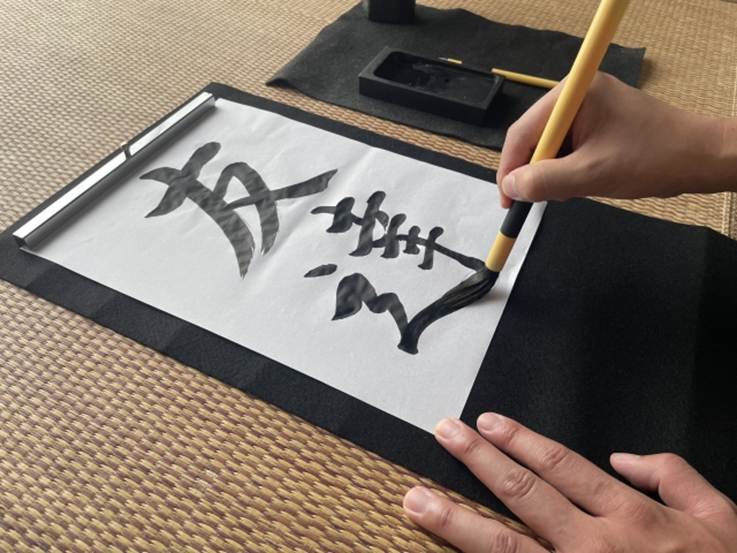
Wearing a Kimono or Hakama enhances the meditative quality of Shodo, the art of Japanese calligraphy. Using brush and ink, you’ll practice creating beautiful characters while embracing the Zen-inspired philosophy behind each stroke. Traditional clothing adds to the immersive aesthetic, making the experience both visually and spiritually enriching.
Traditional Crafts Experience
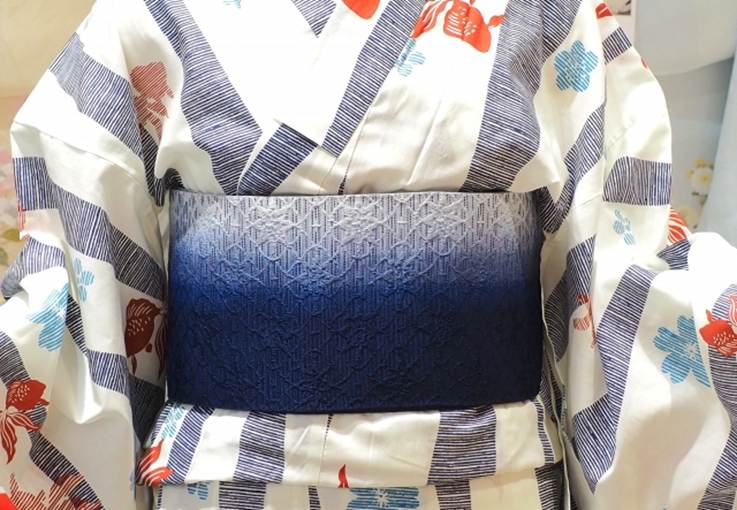
Immerse yourself in Japan’s rich artisan heritage with hands-on traditional crafts. Try kimono dyeing using techniques like Yuzen to create intricate, personalized designs on silk—a perfect way to wear something uniquely yours while strolling through Tokyo or Kyoto. For a more action-packed experience, explore samurai-themed activities: dress in traditional samurai attire, practice sword techniques at museums, or enjoy interactive theater shows featuring sword demonstrations. These experiences let you step directly into Japan’s historical and cultural traditions.
For more crafting experiences read: Traditional Japanese Crafts to Try When Visiting Tokyo.
Festivals & Parades
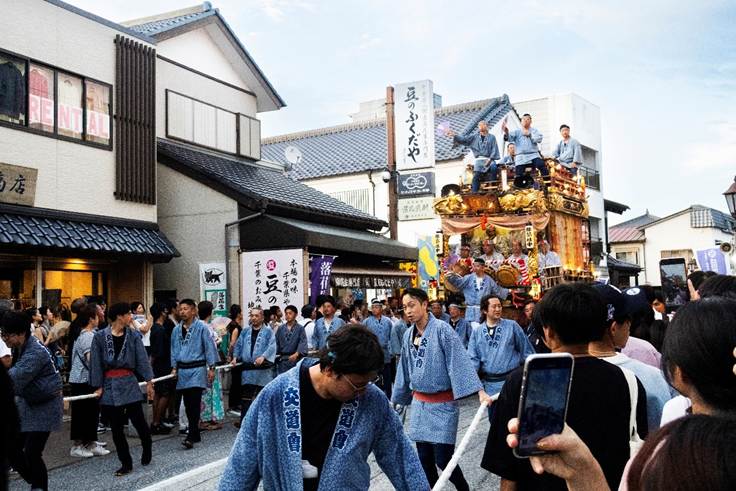
Experience Japan’s vibrant festivals while wearing a yukata during summer matsuri. Feel the rhythm of taiko drums, browse food stalls, and enjoy seasonal treats like Kakigori (shaved ice). Highlights include the Gion Matsuri in Kyoto, Awa Odori in Tokushima, and Nebuta Matsuri in Aomori, alongside Tokyo’s Kanda and Sanno festivals. Dressing traditionally adds authenticity and fun, making these cultural celebrations unforgettable.
Historical Role-Play Tours
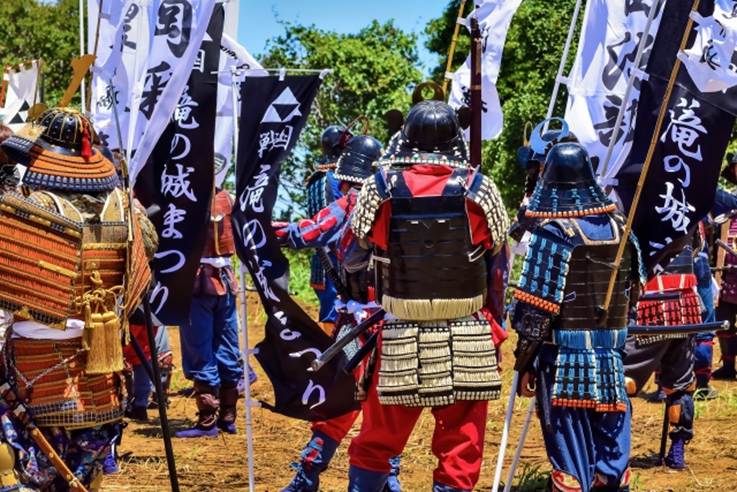
Step into Japan’s past with historical role-play tours, where traditional clothing enhances the experience. Learn swordsmanship, visit samurai castles, or explore ninja history in places like the Koka Ninja House, Iga, Kyoto, and Kamakura. These immersive tours offer a fun and educational way to connect with Japan’s samurai and ninja heritage while fully embracing traditional attire.
A Day in Tokyo Wearing Japanese Traditional Clothing
Sample Itinerary:
Morning: Begin your day with a kimono fitting at a local studio in Tokyo. Choose your favorite design, learn how to wear it properly, and enjoy the transformation as staff help you complete the look with traditional accessories and hairstyling.
Lunch: Stroll through the streets in your kimono and enjoy lunch at a machiya—a beautifully preserved traditional townhouse that often serves authentic Japanese meals in a nostalgic setting.
Afternoon: Continue your cultural journey with a tea ceremony experience. Learn the art of preparing and serving matcha while appreciating the calm, meditative atmosphere that reflects Japan’s refined sense of hospitality.
Explore Tokyo like a local! Read more: 7 Underrated Tokyo Neighborhoods Locals Love and Tour Japan Like a Native: Enjoy a walking tour through the streets of Tokyo.
Cultural Etiquette and Tips for Respectful Participation
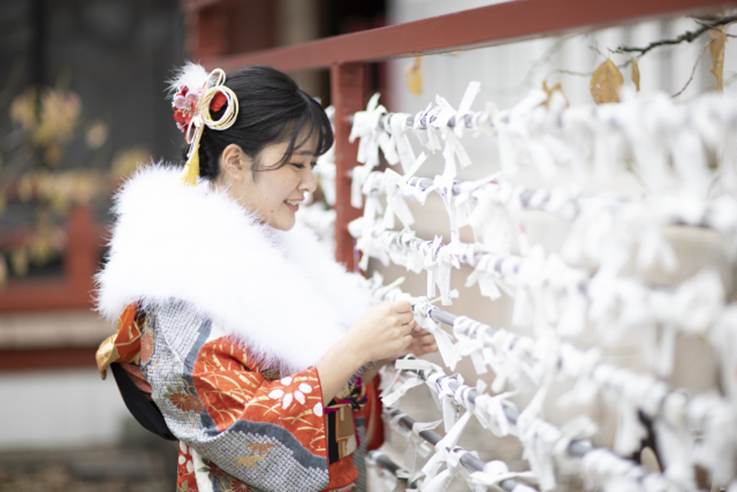
How to Behave When Wearing Traditional Clothing
When wearing a kimono or yukata, move slowly and gracefully. Take small, gliding steps and hold the front hem to keep it in place. Sit with your knees together and back straight—and if using a chair, lift the kimono slightly before sitting down. On tatami, you can kneel in seiza or sit with both legs to one side. Hold long sleeves when reaching, keep your obi tidy, and always fold the left side over the right. With good posture and gentle movements, you’ll look—and feel—perfectly at home in traditional Japanese style.
Photography Etiquette: When in Temples or Private Gardens
As you move gracefully in your kimono or yukata, remember that respect extends beyond how you walk and sit—it also applies to how you capture your surroundings.
When visiting Japan’s temples or private gardens, always follow posted photography rules. Look for “no photography” signs or crossed-out camera symbols, and if unsure, ask staff before taking pictures. Avoid shooting inside temple buildings, private areas, or off designated paths—these spaces are often sacred or delicate. Be respectful of others by not photographing people without permission, especially during prayers, weddings, or ceremonies. Skip the flash and leave tripods behind to protect the surroundings. When in doubt, focus on enjoying the moment—some memories are best kept in your heart, not your camera.
Seasonal and Regional Variations (kimono colors, patterns for the season)
Just as it’s important to respect your surroundings, it’s equally meaningful to dress in harmony with them. In Japan, even the colors and patterns of a kimono reflect the changing seasons and regional traditions.
Kimono colors and patterns change beautifully with Japan’s seasons. In spring, soft pinks and pastels with motifs like cherry blossoms or wisteria reflect renewal. Summer brings light, airy fabrics such as yukata in cool blues and whites, often decorated with water or morning glory designs. Autumn favors rich reds, golds, and browns with motifs of maple leaves and chrysanthemums. Winter features deep colors like navy and black, accented with pine, plum blossoms, or snow patterns for warmth and elegance.
It’s considered stylish to wear motifs just before they bloom, showing anticipation of the coming season. Color and pattern choices may also vary by region and occasion—for example, red symbolizes protection, while purple signifies nobility. Dressing seasonally not only enhances your look but also connects you more deeply with Japan’s natural rhythms and traditions.
Learn more about the seasonality of Japan in our articles: Seasonal Wonders: Best Activities in Tokyo and Guide to Japan’s Seasons and What You Need to Know Before You Go.
Accessibility/Comfort Tips
Whether you’re exploring temples in Kyoto or strolling through a garden in Tokyo, comfort makes all the difference when wearing traditional clothing. Always check the weather before heading out—Japan’s climate varies widely by region and season. Layer with a light scarf or Haori jacket for warmth, and choose breathable fabrics like cotton or linen in summer.
Since you’ll be walking a lot, wear comfortable, slip-on shoes—they’re easy to remove when entering temples or tatami rooms. Take short, steady steps in a kimono, keep good posture, and carry a small bag for your essentials. A lightweight shawl or scarf adds warmth without hiding your obi. Pace yourself, stay hydrated, and enjoy your time in comfort and style.
Benefits of Immersive Cultural Clothing & Activities
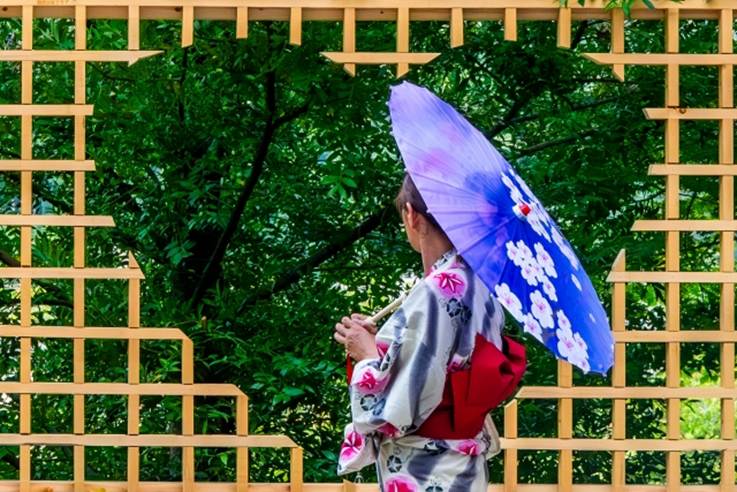
Wearing a kimono or joining a tea ceremony isn’t just about taking beautiful photos—it’s about feeling part of Japan’s living culture. These hands-on experiences create a deeper connection to Japanese traditions, helping you understand the values of grace, mindfulness, and respect that shape daily life.
By participating, you also support local artisans, small studios, and cultural guides who keep these traditions alive in sustainable ways. More than sightseeing, it’s an opportunity to experience Japan from the inside—to feel its rhythm, craftsmanship, and quiet beauty in every gesture and moment.
Read more: Experiencing Zen and the Art of Natural Landscapes: Understanding Japan’s View of Nature.

Stepping into traditional Japanese clothing and cultural activities is more than a day’s experience—it’s a journey into Japan’s living heritage. Whether you’re wearing a kimono through Kyoto’s historic streets or joining a tea ceremony in Tokyo, each moment brings you closer to the heart of Japanese tradition.
At Best Experience Japan, we invite you to discover these authentic cultural experiences for yourself and make memories that go beyond sightseeing.
Japan’s cultural heritage is alive and waiting to be experienced—one graceful step, one shared smile, and one beautiful moment at a time.
